An early update for June as our good friend and mentor Neil Morton of Progress Concepts, who very kindly runs our website for our little venture is away at the end of the month on a well deserved holiday; so thoughtfully asked if I could jot a few words down for him to post on our blog before he jets off into the sunset.
So in the last three weeks since our last published update and besides enjoying the lovely sunshine here in the U.K. what you may ask have we been up to regarding the building of our jet hydroplane Longbow?
Well it would be silly not to have made use of the good weather this month so firstly we got on with spray painting of the steel cradle structure that houses the twin jet engines for Longbow. Our paint sponsor HMG asked what colour we would like to use for this particular job and I thought as we were using aircraft jet engines in Longbow, then standard Aircraft Grey Green would be appropriate that is until my wife Gill noting the outside of the hull is partly painted red came out with the old adage ‘red and green should never be seen’.
With that in mind we opted for BSI-381C 671 which is middle graphite and appears to have been used upon the tubular chassis of some of the historic era Lotus racing cars that I am rather a fan of. HMG very kindly mixed the colour and the products were therefore EP2 Epoxy grey primer followed by the middle graphite colour coat from their Monothane range which all combined to provide excellent protection against corrosion as well as a coating that is helpfully in our case resistant to jet fuel / petrochemicals.
Rather than have to deal with all the hassle of paint overspray in the workshop and with the sun shining we set up a little three sided spray tent out in the garden for the cradle frame to sit upon a pair of trestles, whilst Gill hung associated metal brackets for the cradle from string and bent wall ties suspended from the washing line so I could then get around each bracket to spray paint those too.
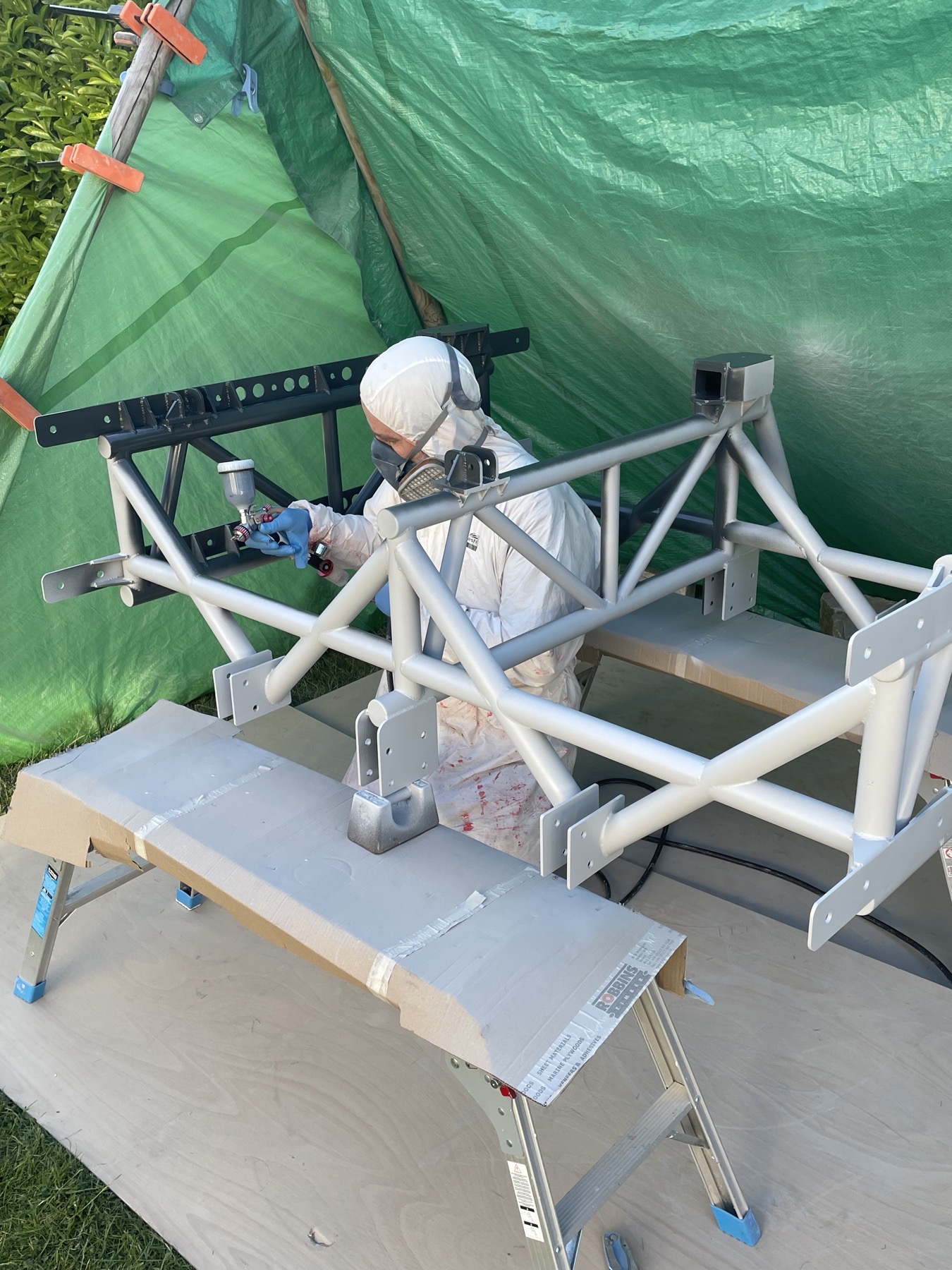
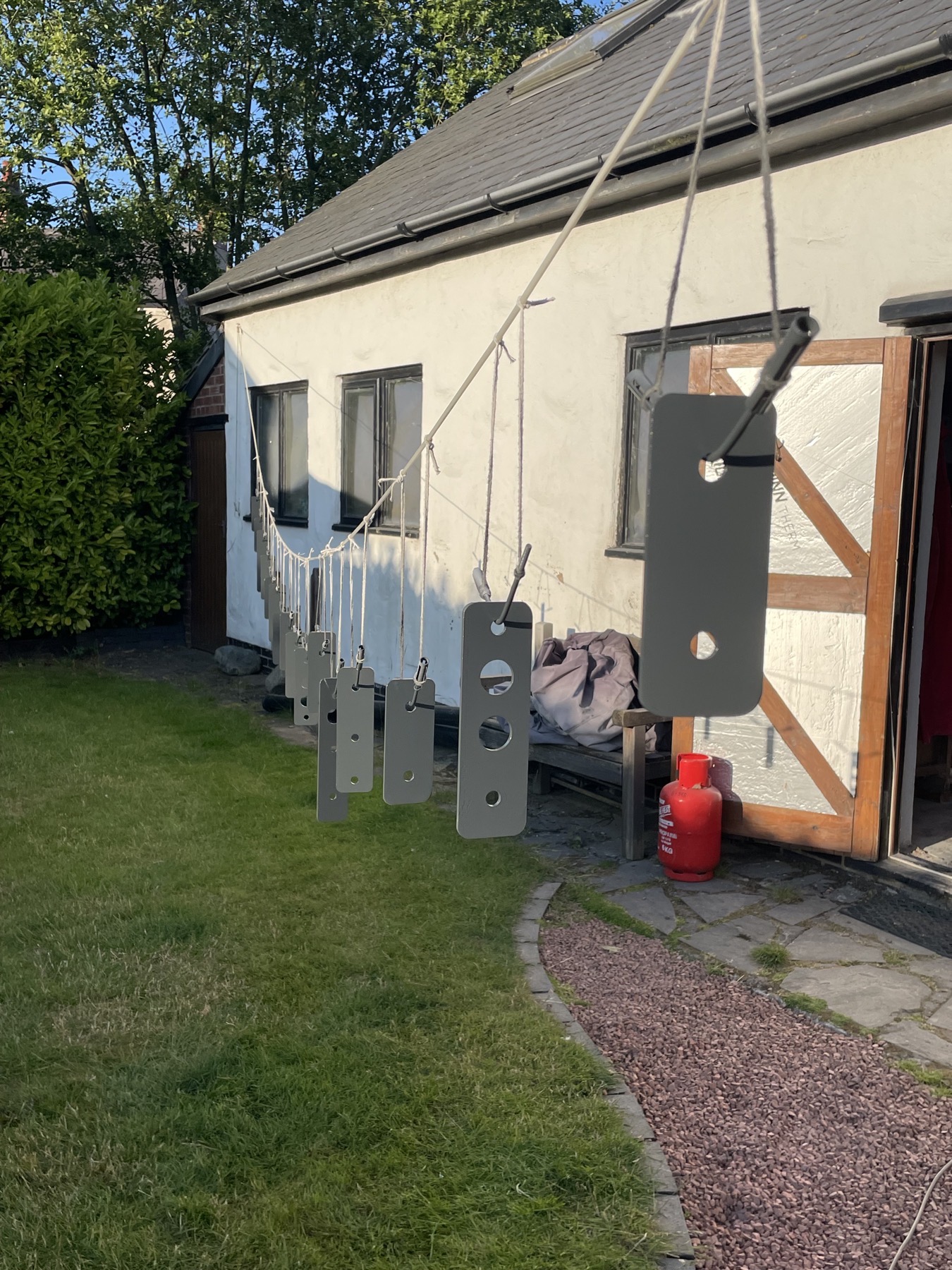
With my little compressor buzzing away the HVLP (High Volume Low Pressure) gravity feed spray gun and touch up gun very kindly provided by our sponsor Sealey were absolutely brilliant, what a lovely bit of kit allowed us to get the job done in no time at all.
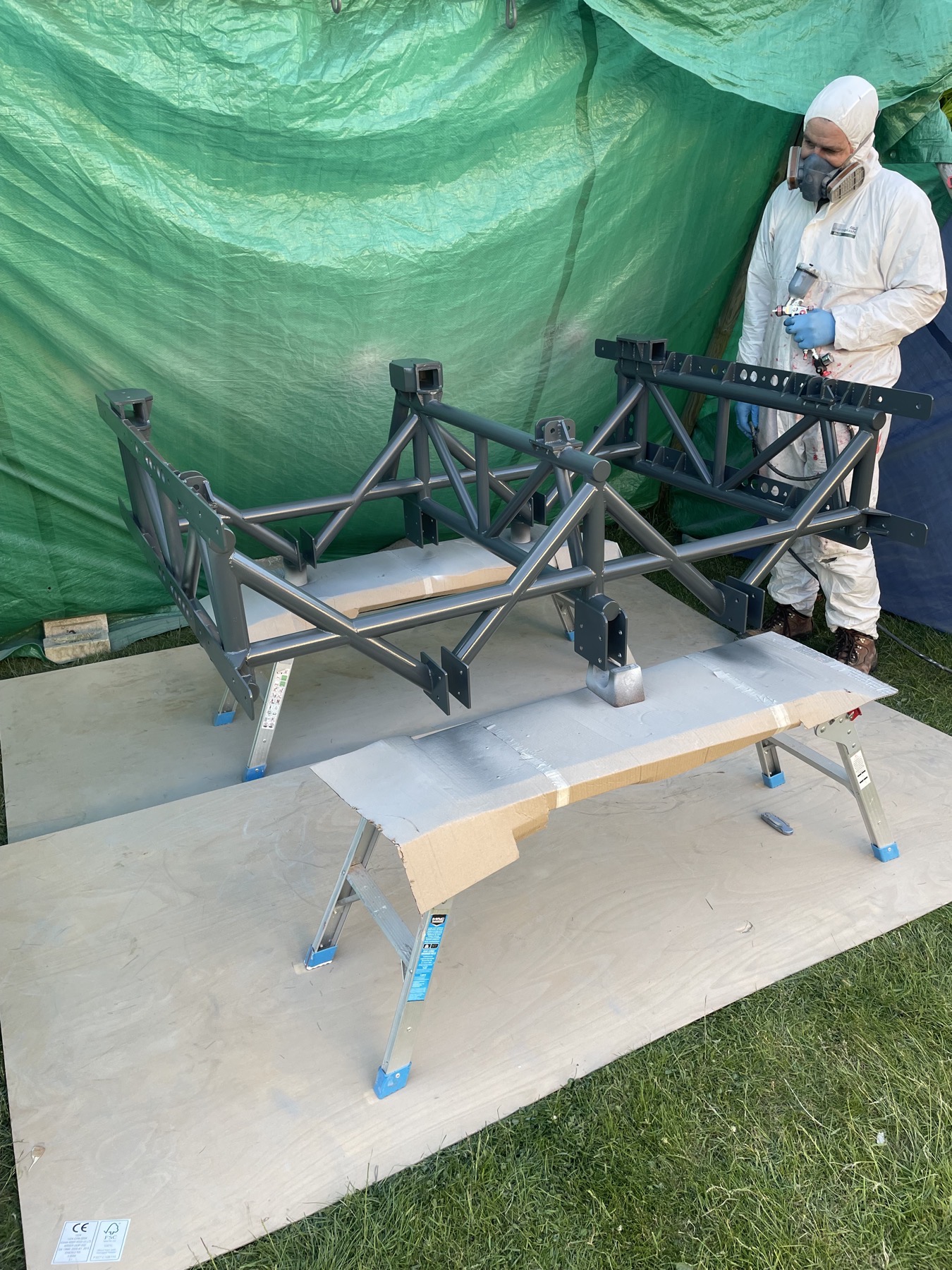
With that task out of way our the next job was to begin sorting out the jet pipes that carry the thrust from the engines out to the back of the boat. Having done a trial fit of one of the jet engines in Longbow’s hull last month we had at that time been able to measure the length of jet pipe that would be required. However this was not going to be just a simple case of popping down to the local hardware shop for a bit of steel pipe and fastening it to the back of the engines.
When we bought the jet engines for Longbow we also purchased two of the entire lengths of jet pipe along with their respective heat shields that marry with the Rolls Royce Viper 535 engines to power the BAC Strikemaster aircraft. The jet pipes are lengths of round metal tube that are surrounded by sections of dimpled metal heat shield the latter being to protect the fuselage of the aircraft from being exposed to the tremendous amount of heat within the jet pipe that occurs whilst the engines are running.
All of these jet pipes / heat shields were wrapped in packaging from Rolls Royce and to keep them out of the way we had winched them up into the rafter space of my cottage workshop on rope pulleys, whilst down below we had got on with building the hull for Longbow. With the help of my son Robert it was now time to bring the jet pipes down, unpack them, remove the heat shields which are in sections held on by a series of springs / metal clips and then see what would be involved with converting them for use within our jet hydroplane.
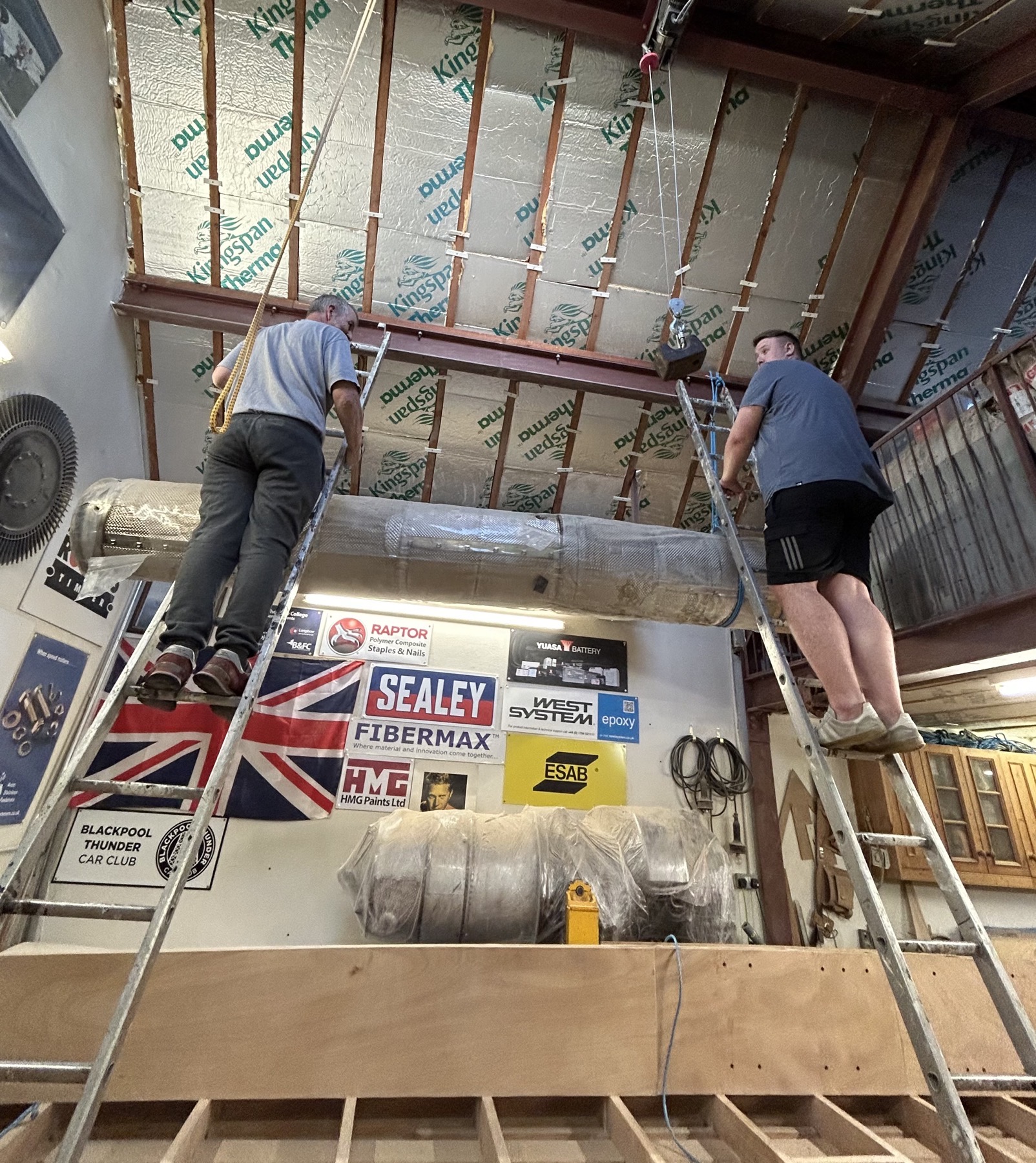
In the aircraft the thrust coming out of the back of the engine passes firstly into a small length of jet pipe measuring around one metre long that also reduces in diameter over that distance as shown in the photograph below below.
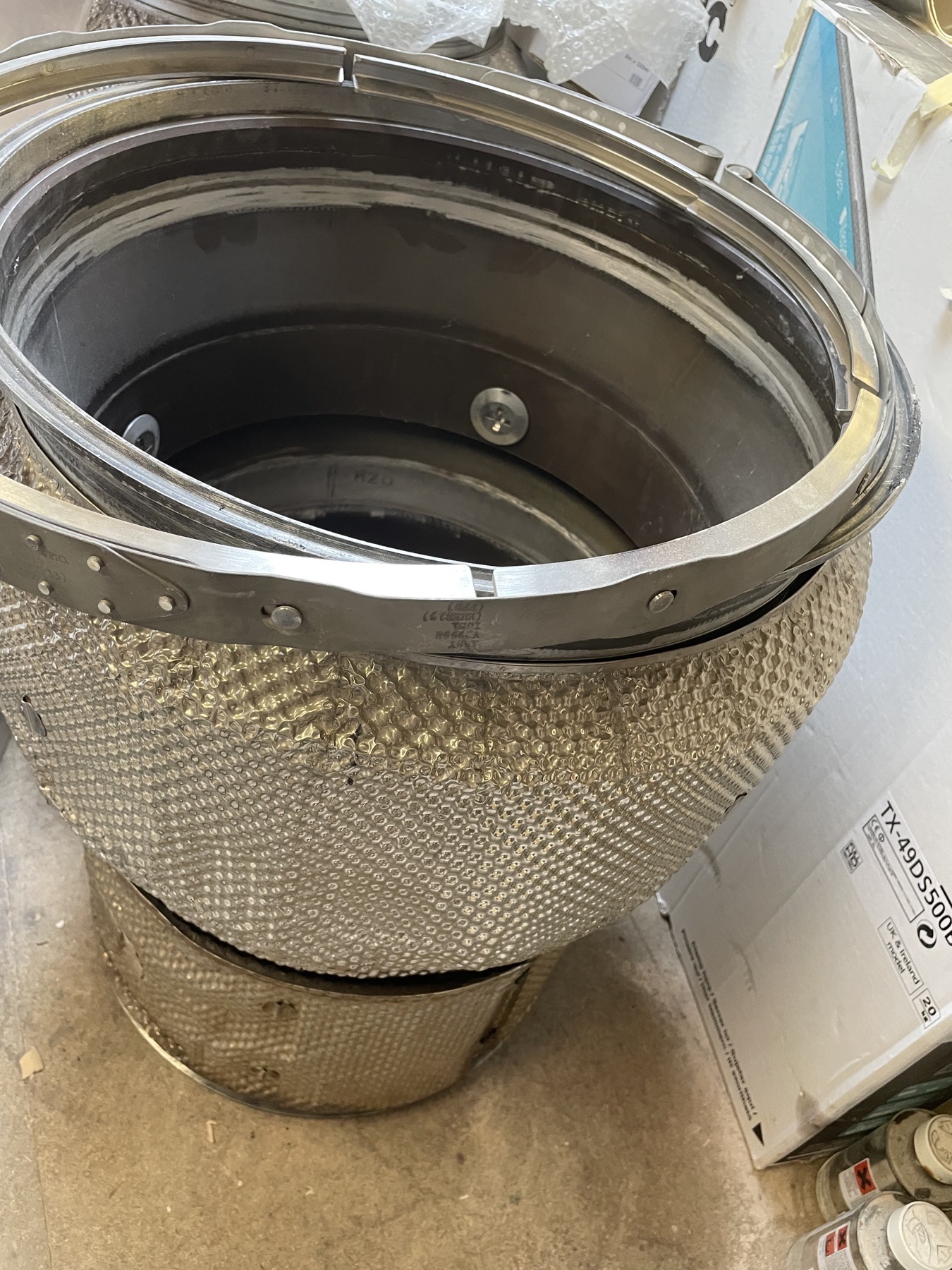
This intermediate jet pipe clamps to the rear of the jet engine and then also clamps to a much longer length of jet pipe (around four metres) that then exits out the rear of the aircraft. Part way down this longer length of jet pipe there are four fixing points where thermocouples are bolted down and into the jet pipe. These thermocouples are then connected via wires to a gauge in the cockpit of the aircraft and in our case boat which lets the driver / pilot know the temperature inside the jet pipes which in turn helps them ensure each engine is performing correctly.
This four metre long length of jet pipe has a flange at one end to connect it to the short piece of intermediate jet pipe previously referred to whilst at the other end where the thrust of the engine finally come out of the rear of the aircraft, the jet pipe reduces to an even smaller diameter. In this way the thrust of the jet engine is concentrated into a very powerful jet stream rather like when you put your thumb partly over the end of a hosepipe to make the water coming out of the hosepipe more powerful. All of these changes in diameter are highly critical in allowing the engine to run at the right temperatures and letting the engine provide as much thrust as it is capable of.
Now in our case for Longbow we only need less than half the length of this four metre final stage of jet pipe previously referred to. Unfortunately it is not just a case of chopping off the last two metres of the jet pipe. This is because if we do not include the last two feet at the very end of the jet pipe it is going to play havoc with engine performance and parameters as previously mentioned.
So just to recap from this four metre long last stage of jet pipe where we now only require a length of around two metres, we need its connecting flange to fix it to the intermediate section of jet pipe, we also need the area of jet pipe that contains the thermocouple mounting points and lastly we also need the very end of the jet pipe where it reduces in diameter.
If that wasn’t enough hassle and just to complicate things even further the jet pipes are not straight in the aircraft for which they were originally made. They actually bend / change direction not just once but twice to work their way through the aircraft fuselage. Most visibly as seen in the photographs below, the jet pipe changes direction about half way along its length but just for good measure it also changes direction by around three degrees immediately downstream to the connecting flange at the front of this four metre length of jet pipe. Three degrees might not sound a lot but over the length of the jet pipe it becomes a very significant change in direction.
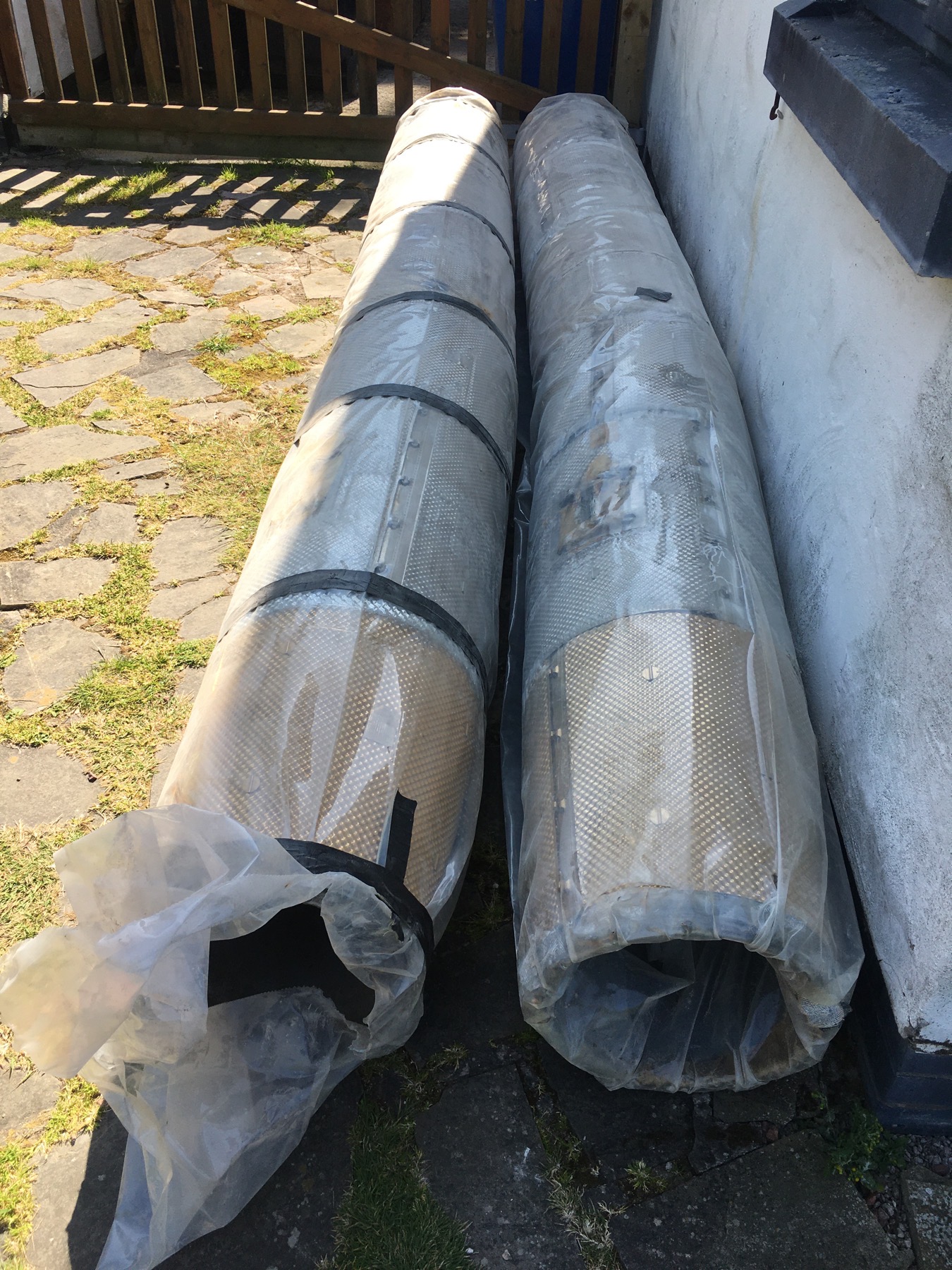
In our case we don’t want all these bends / changes in direction to the jet pipes, we only want the jet pipes to consistently point straight from the rear of the engine to where the thrust generated by the engines finally emerges. So from all of that you will appreciate that we have to cut the jet pipe into several pieces, use the bits we need that are straight and discard the rest. For my part it was therefore a case of measure twice and cut once, trying to follow as best I could the line I had marked all the way around each section of jet pipe that we wanted to retain.
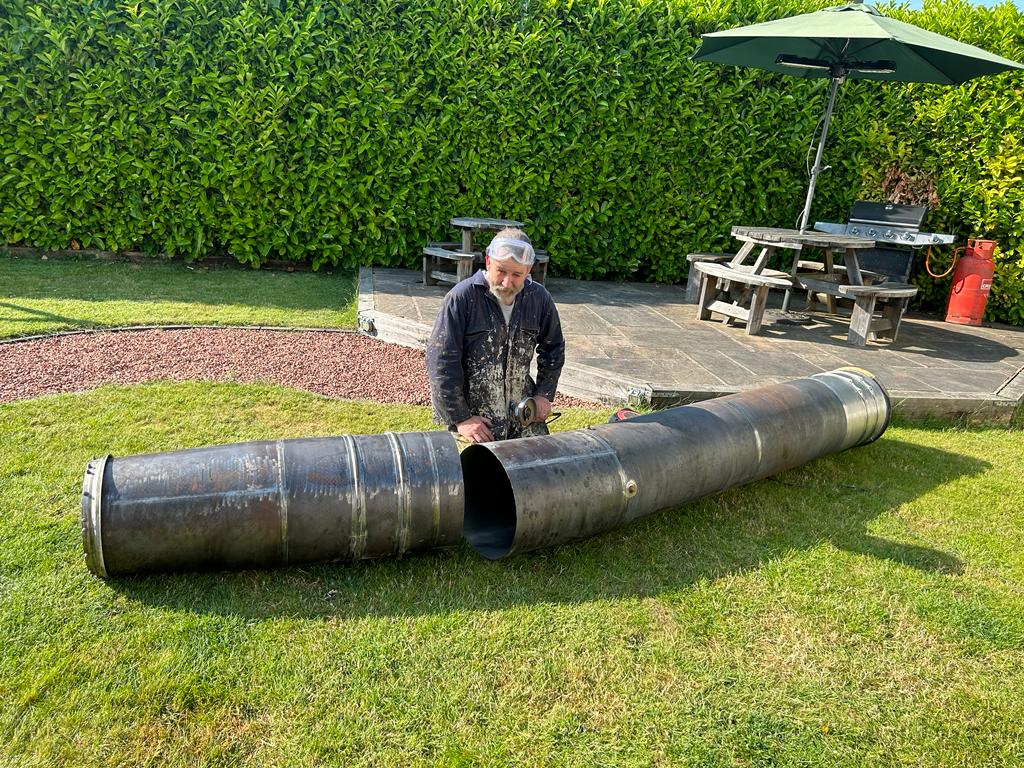
However the fun was only just beginning as I was more than aware that the difficult part ahead was going to be welding all these bits of jet pipe that we wanted to retain back together in one complete round straight section. This welding of the metal back together is not just your run of the mill bit of plain steel sheet material. No in our case this is a type of metal that is called Nimonic and covers a family of nickel based high temperature low creep superalloys that were first developed by the British for use within high temperature jet engines during the 1940’s. Over time different grades of Nimonic have been developed including for the jet pipes those that have desirable ductility in the welded assemblies. The grade of Nimonic used in our jet pipes consists of around 16 different elements examples of which are cobalt, titanium, aluminium, nickel, silver, etc.
Short lengths of this Nimonic alloy sheet material are rolled into the shape of a short tube by the manufacturer and appear to have been hand welded where the ends meet to form a section of pipe. Each short length of pipe is numbered and has then been automatically welded rather than manually welded to an adjoining piece of pipe in order to form the full four metre length of jet pipe. You can see in the following photograph the difference between the manufacturer’s automatic welding process running vertically at the jet pipe section joints that connect one length of pipe to another, compared to the horizontal manual welding by the manufacturer that makes the sheet material into a round section of pipe.
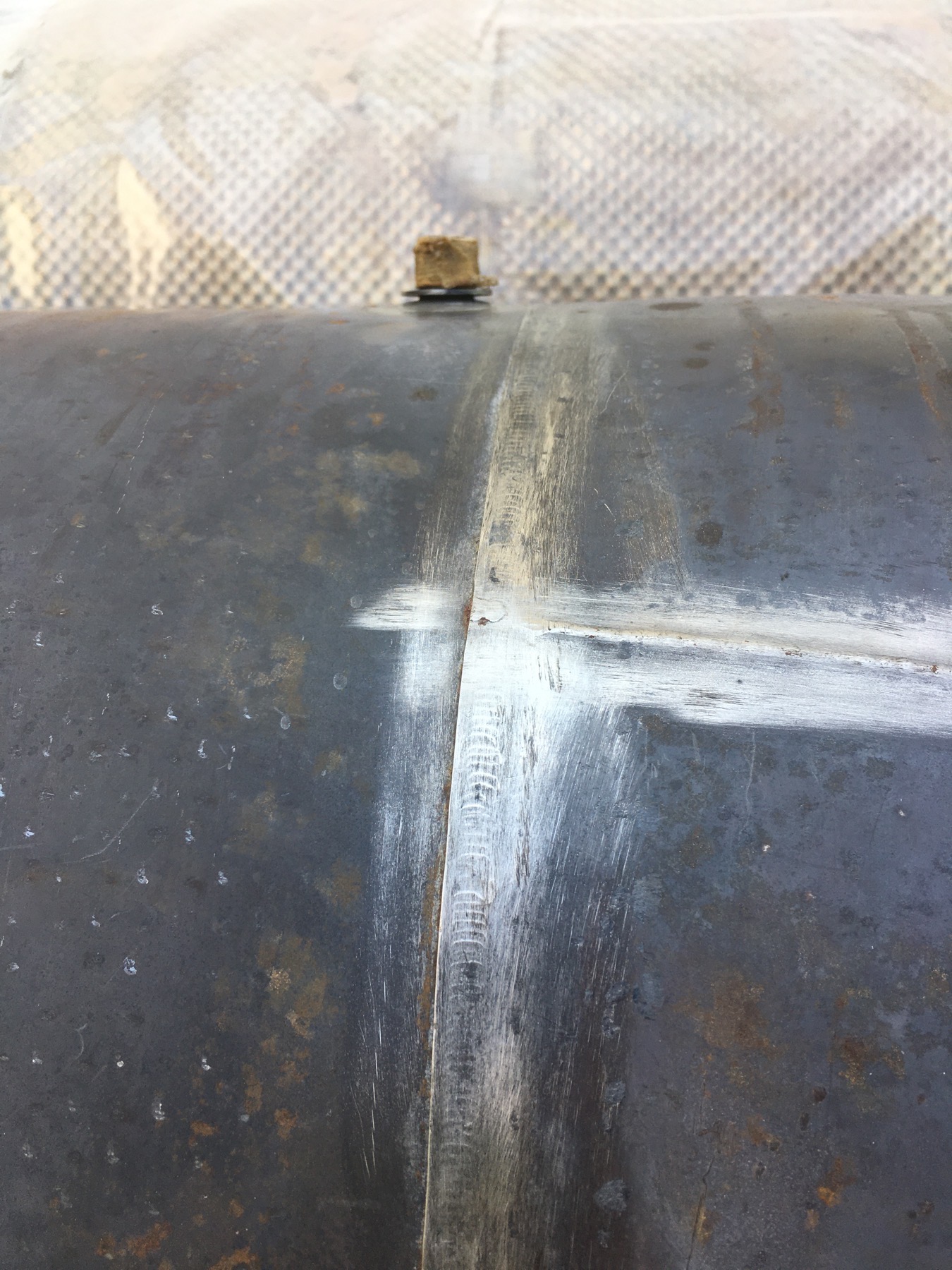
The material for the jet pipe itself apart from the end flange and support brackets is only in the order of just over 1mm thickness which whilst great in that it is nice and light for use in the aircraft for which it was originally designed is on the other hand going to be an added headache in trying to stop such thin material distorting when welded back together by hand.
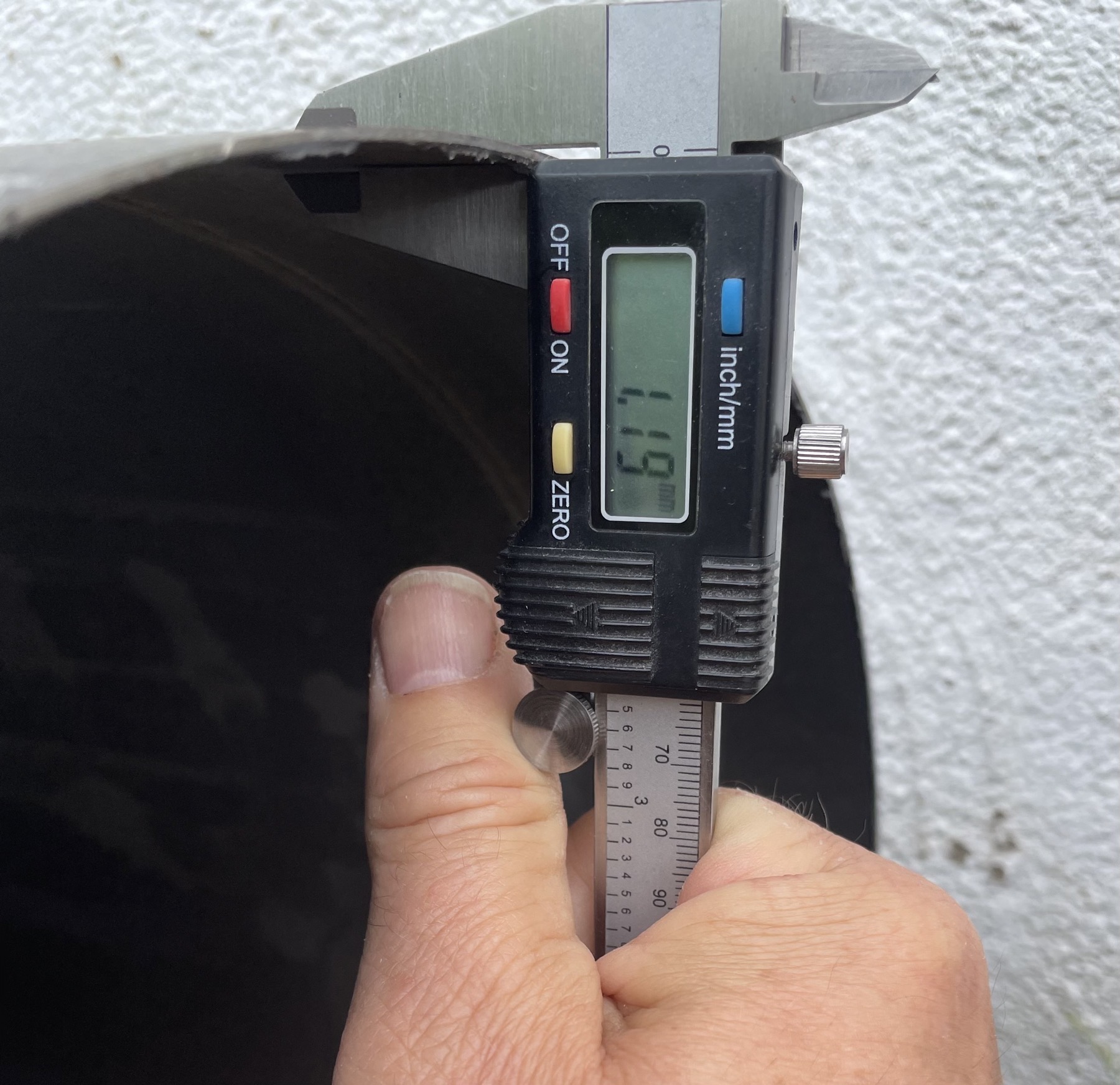
With all that in mind all we could do at this stage was to load the several lengths of jet pipes that I had cut into the back of our car and drive over to see our expert coded welder Steve Charlesworth and his wife Jenny whilst praying that Steve would be able to work his magic and be able to sort it all out.
Having sheepishly left the jet pipes bundle of joy with Steve on his farm to scratch his head and figure out how he was going to join all the material back together, my next job was to cut a series of pretty holes in the two vertical laminated timber stringers to the hull of Longbow. The purpose of these holes is that not only does it takes a bit of weight out of the hull which is no bad thing within limits for a boat that is desired to run at speed but more importantly it allows access to the voids behind for both periodic inspection and a handy place to run any pipes / cables / add buoyancy foam and the like out of the way of the main engines.
Cutting the holes is something of a messy fiddly job to undertake with a mixture of power and hand tools but it is nice to use some of those tools on the boat like the brace and bit that have been in my family for generations used previously by my relations who had more talent and skill than I will ever have.
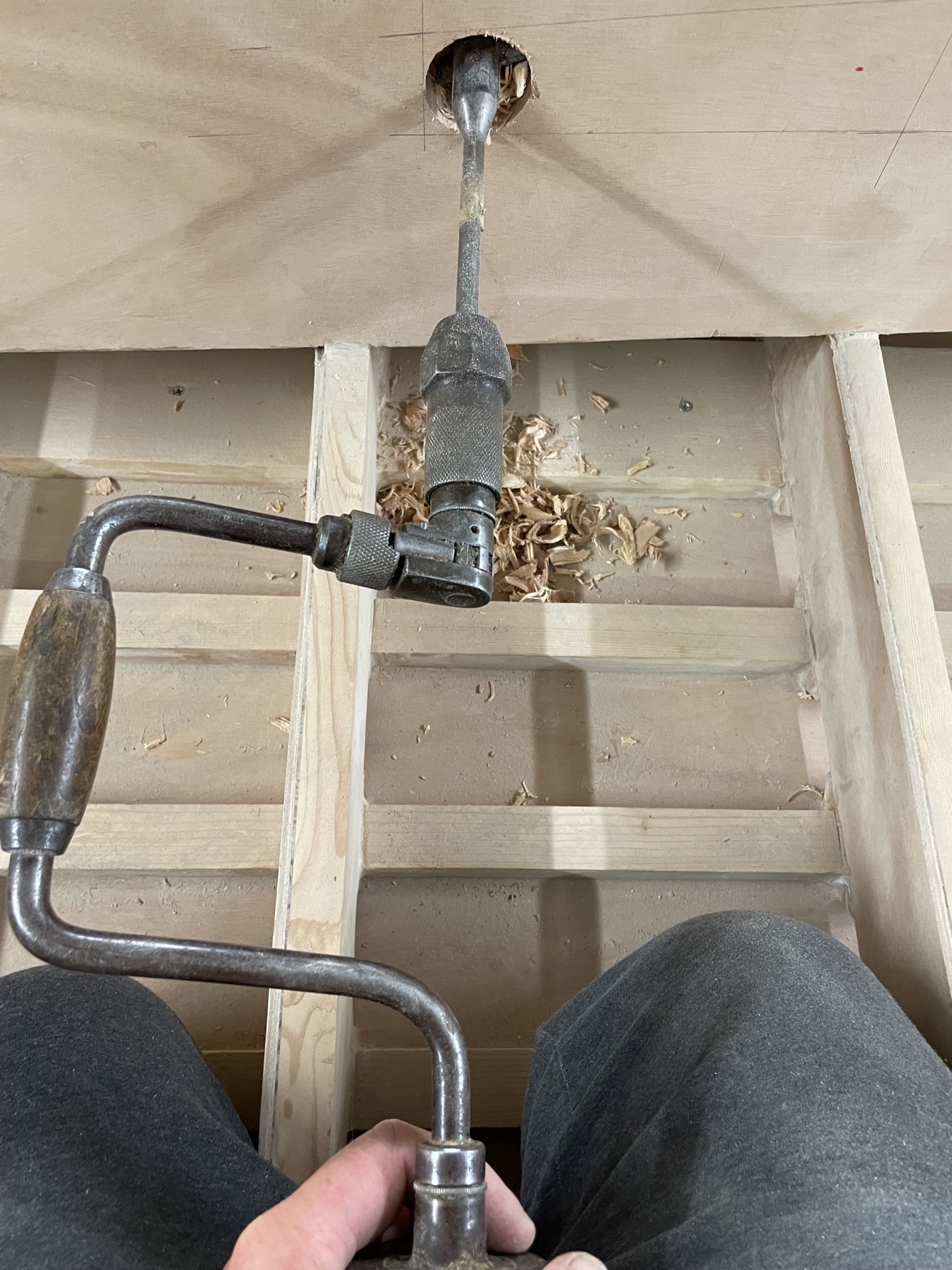
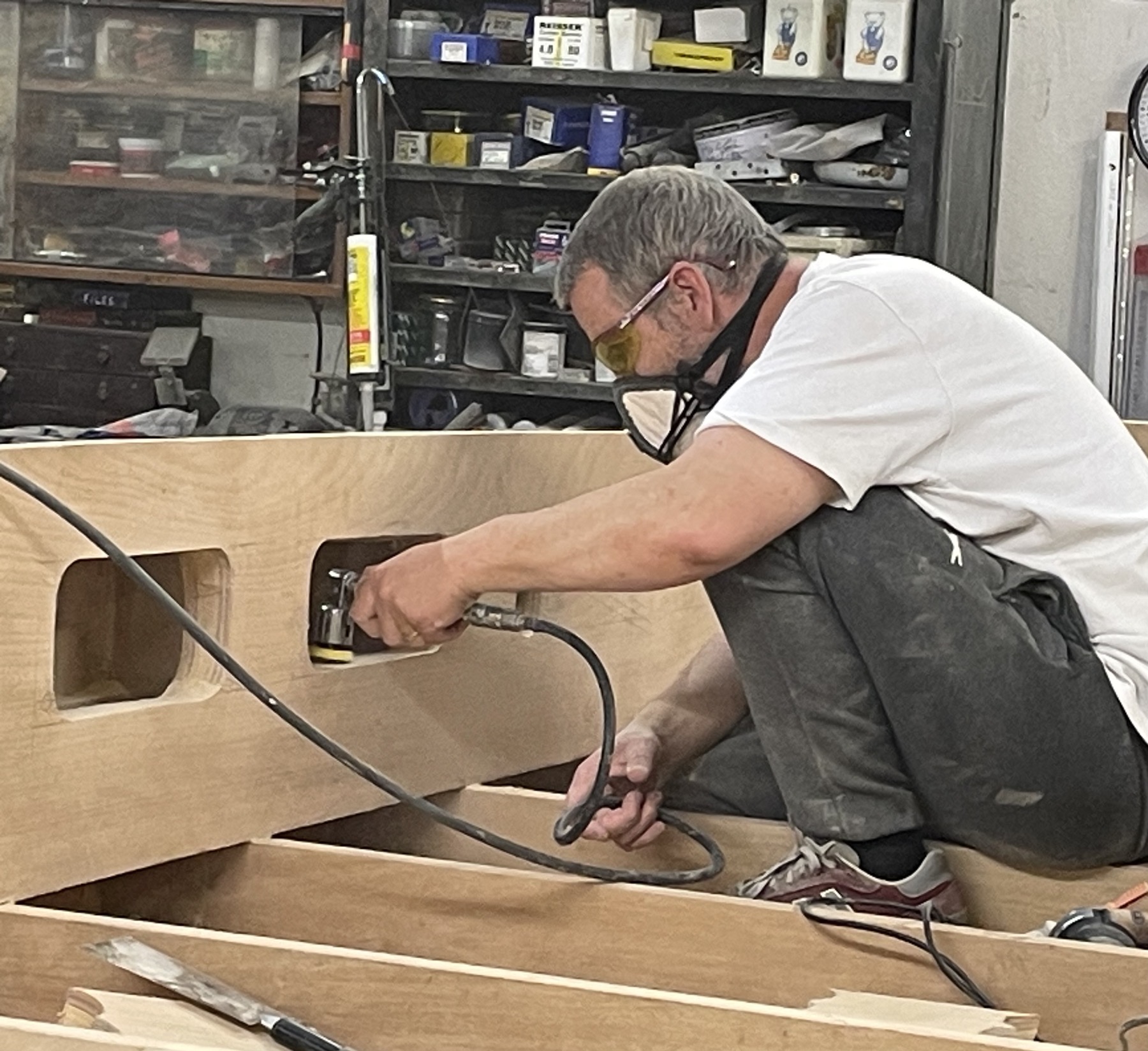
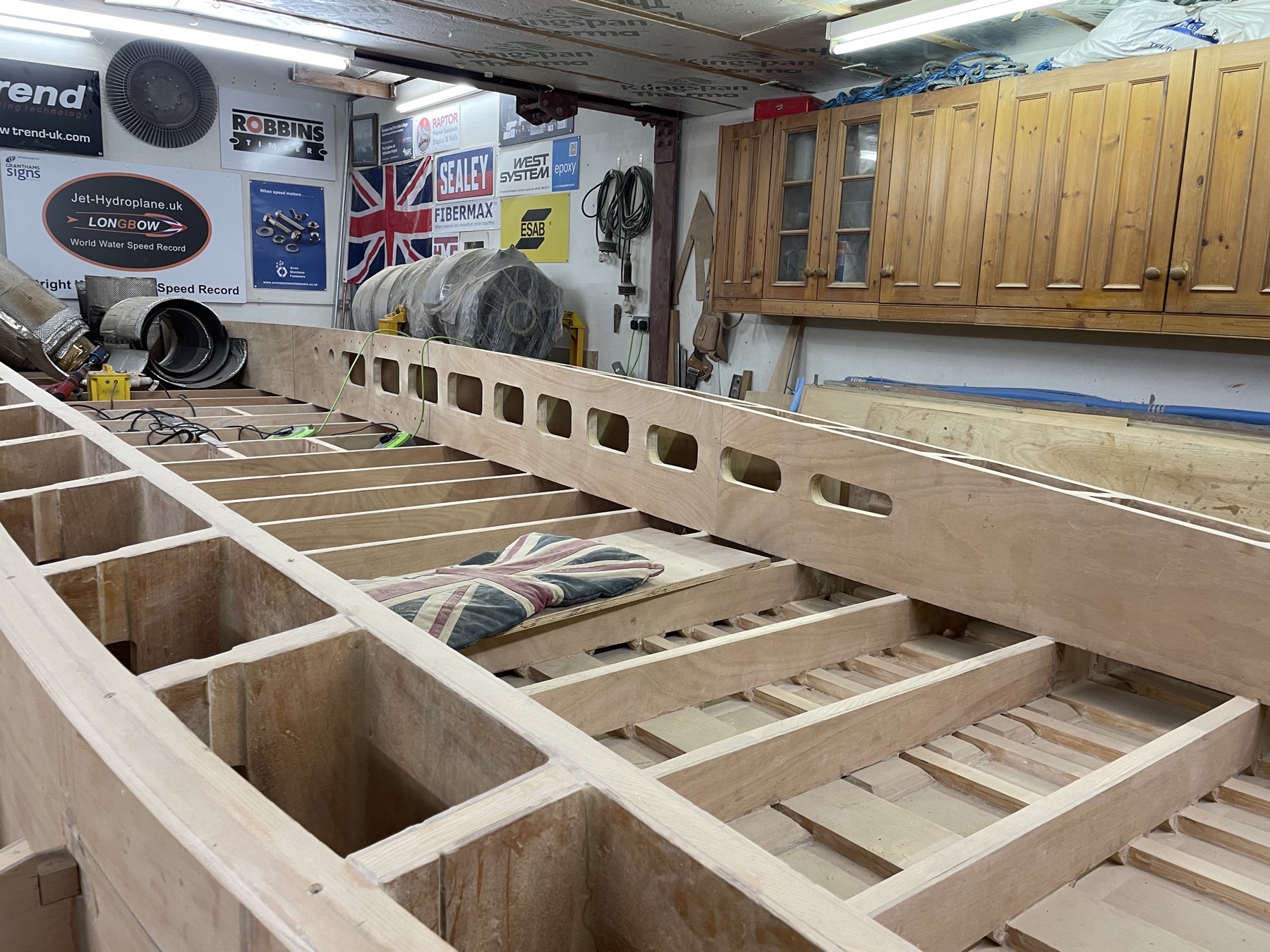
As an added bonus in amongst all that was my granddaughter Eleanor being dropped off for a little bit of babysitting with Papa and strict instructions from mum to get the swing out and entertain her in the garden. What her mum Hannah, my daughter, was not quite expecting upon her return was her little bundle of joy playing with offcuts of wood and felt pens in the hull of Longbow which to Eleanor looks and sounds like a Viking ship and far more exciting to play in than the garden, though she did go home a different colour to that when she arrived.
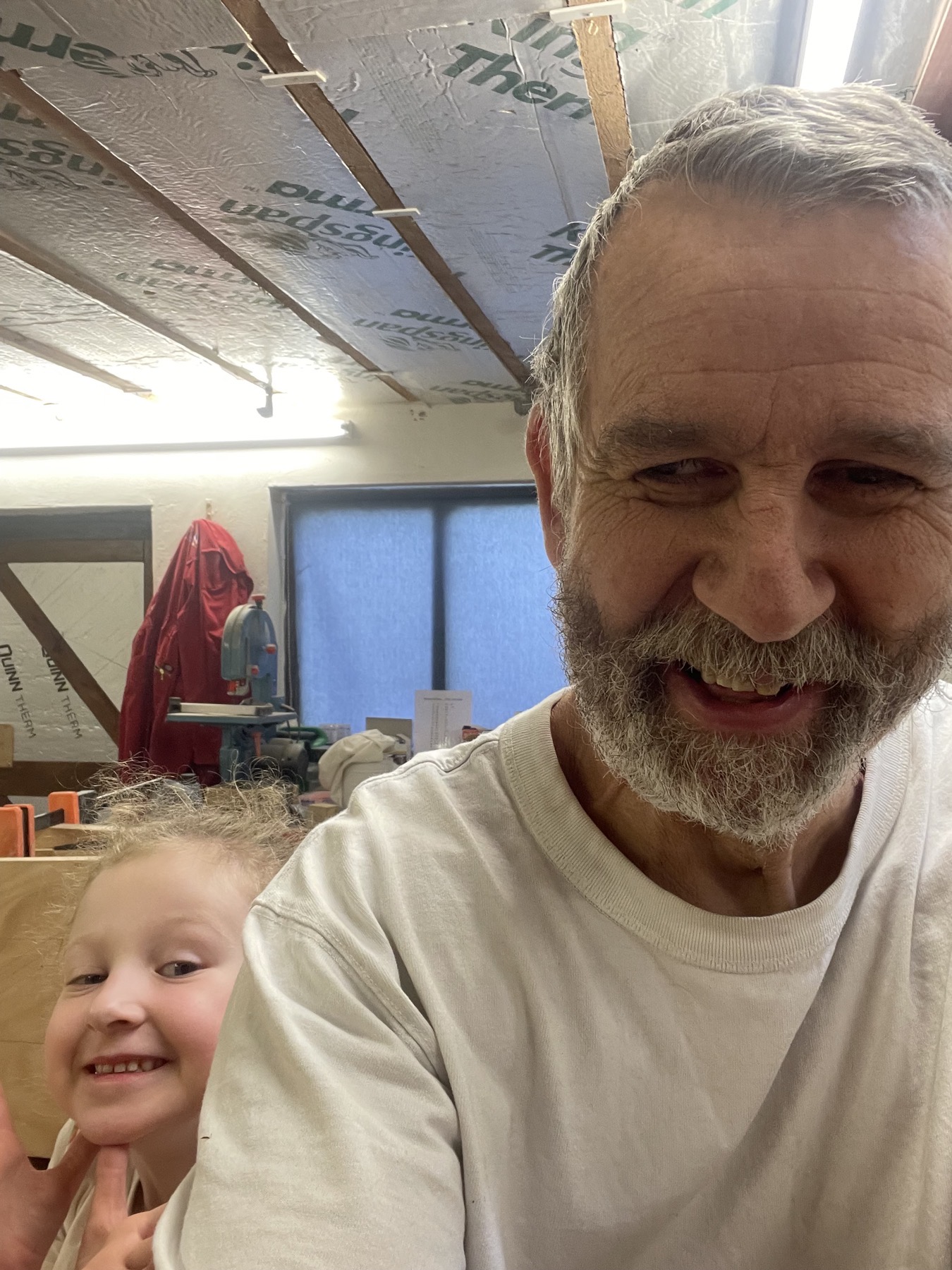
At time of writing this blog my hole cutting in the vertical timber stringers is still something of a work in progress as they need a bit more sanding and shaping to finish them off but we are making good headway which is the main thing. As an added bonus you can also see in the following photograph that Longbow’s size really was dictated by the dimensions of my cottage workshop down to the last inch!
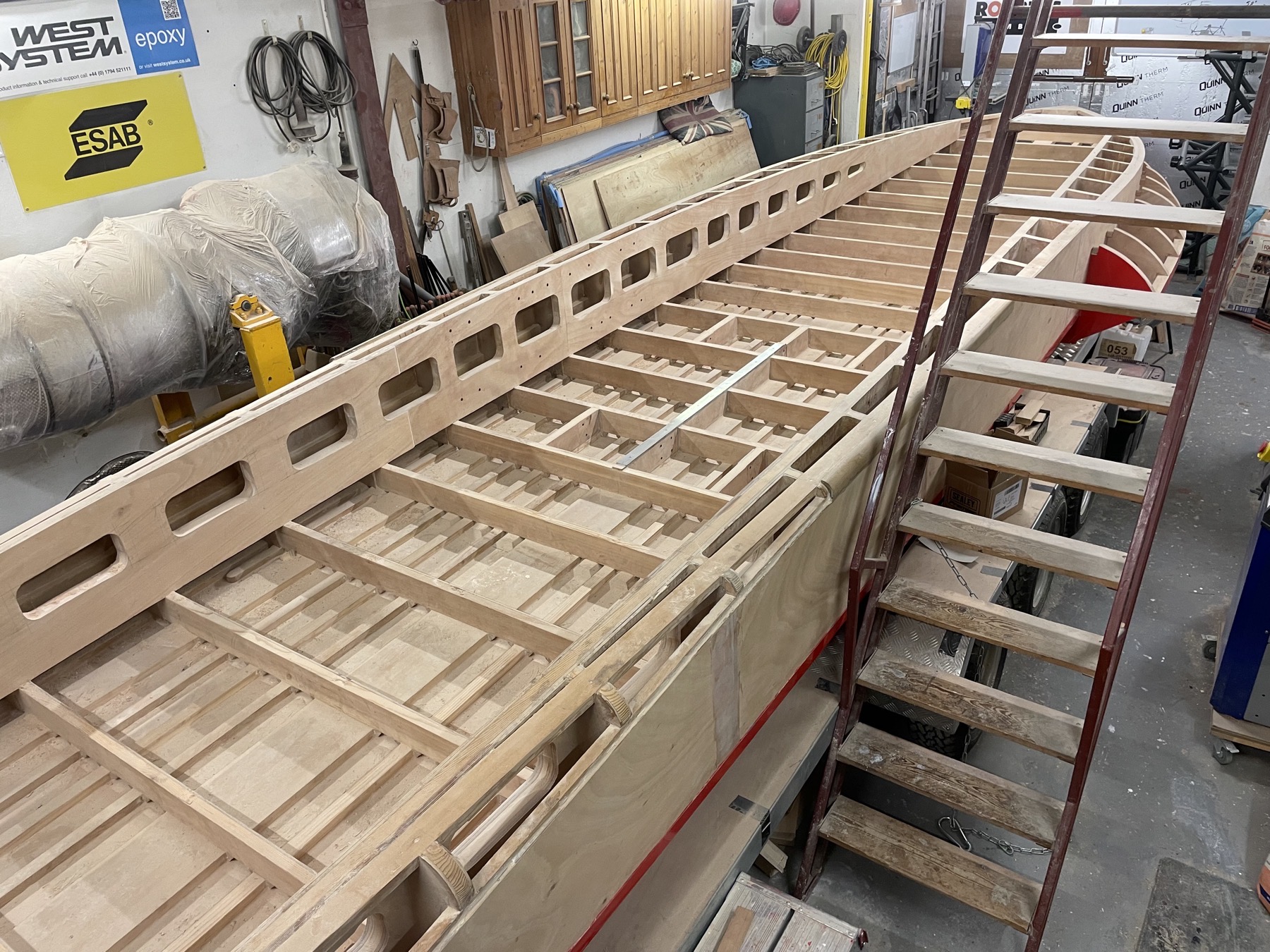
Well that is all for this month’s update folks and hope I have not bored you too much with my wittering herein. If you have not done so already please take a moment to like our Facebook page and drop by towards the end of next month for the next update on progress as we build our jet hydroplane Longbow to run and develop on lakes and lochs in the U.K.
